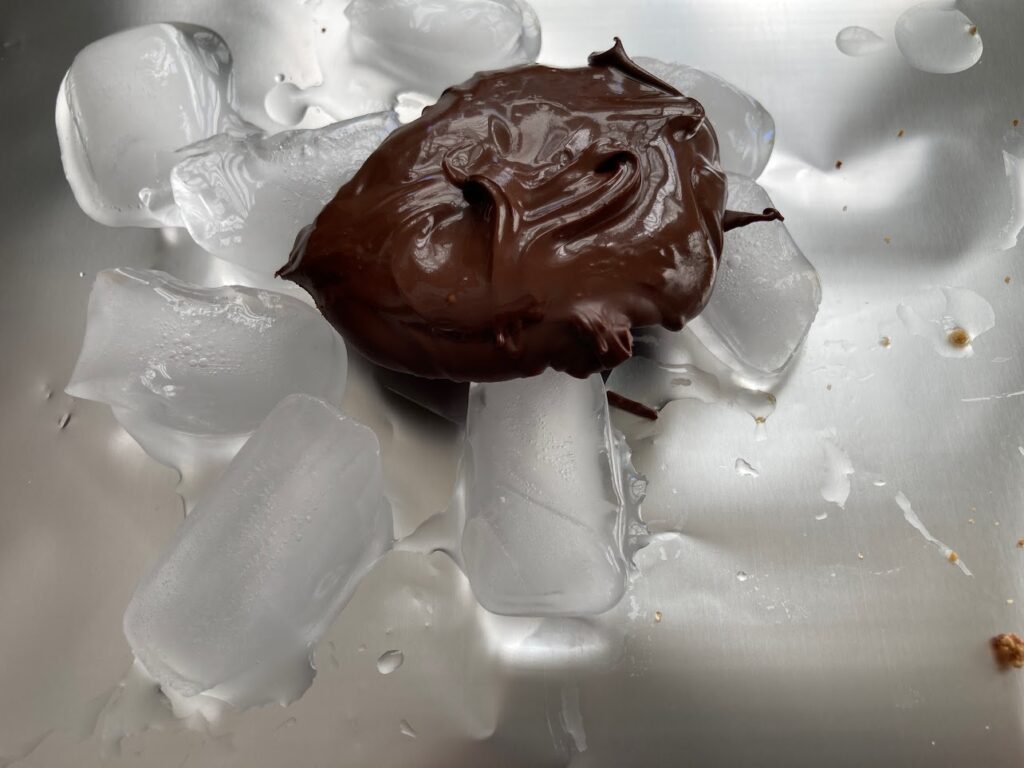Sedimentary, metamorphic, and igneous rocks
One day, as we were driving past huge rock formations, my daughter asked, “How are the rocks made?” I gave her a brief explanation and promised to dedicate a lesson to rock formation.
We borrowed a book from the library titled “The Rock and Gem Book: And Other Treasures of the Natural World (DK Our World in Pictures).” This exciting and colorful book provided us with a lot of information about different types of rocks. However, I realized that we needed to establish a foundation before diving into the details. Starting with just three types of rocks and later introducing the concept of the rock cycle seemed like a good approach.
I researched various suggestions online and found plenty of ideas for creating edible rock formations. After going through them, I decided to use ingredients we already had in our pantry and to purchase graham crackers from the store.
Sedimentary rocks.
Here is a list of things I used to make sedimentary and metamorphic rocks:
- Graham crackers with cinnamon
- Graham crackers (original)
- Puffed rice
- Brown sugar
- Biscoff Cookie Spread
- Chocolate chips
- Kraft Jet-Puffed Jumbo Extra Large Marshmallows
We talked about rock erosion and how it breaks larger rocks into smaller parts or sediments. Both my kids were excited to crush graham crackers in a small ceramic bowl. Then the oldest child layered the crumbs in the cupcake pan. This was our first layer in a sedimentary rock formation. We repeated it with the second flavor of graham cracker, which had a lighter color, and added another visible layer to the cupcake pan.
After we were done crushing, smashing, and sampling graham crackers, we moved on to puffed rice. Puffed rice was like small shells. Brown sugar was like a layer of sand in our rock formation.
Then there needed to be a layer of ‘mud’. There were so many sticky options to choose from: honey, Nutella, peanut butter, and Biscoff Cookie Spread. We picked Biscoff Cookie Spread.
We added some small ‘rocks’ (chocolate chips) on top.

After that, we pressed our layers really hard. I actually mixed them a little bit, so that everything would stick to the Biscoff.
Then my daughter sampled one of the sedimentary rocks which we created. It was crumbly and falling apart. We learned that sedimentary rocks are not very strong and that they are created in layers over the years with lots of pressure on the layers.
Metamorphic rocks
I preheated the oven to 400°F, added marshmallows on top of each sedimentary rock formation, and placed the cupcake pan in the oven for 10 minutes. After the marshmallows and chocolate chips melted, I took the pan out of the oven, mixed the rock structure, and let it cool for about 20 minutes on a piece of foil. Then we sampled it J
We learned that metamorphic rocks are formed when existing rocks are transformed by heat and pressure.

Igneous rocks
We had done a bunch of science experiments with volcano eruptions in the past, so my child already knew about lava, magma, and what goes on during the volcano eruption process.
I melted a handful of chocolate chips in a ceramic bowl in the microwave. We poured the melted ‘lava’ onto a sheet of foil to cool down. My daughter learned that there is a type of rock formed from lava that comes from a volcano.

Since our lava rocks were taking a while to cool down and I needed space on the kitchen counter, I wrapped all our metamorphic rocks and chocolate lava rocks together in foil and placed them in the fridge. This turned out to be a delicious camping-style dessert, which pretty much explained how some rocks are formed through a mixture of metamorphic rocks, lava, and pressure.
We watched an interesting video on YouTube “Rocks for Kids | Learn all about geology and rocks.”
To dig a little bit more into a sweet rock formation process, we made lava cake in the evening.

For sure, it was a sugar overload, but the idea of different types of rocks literally sank in very deeply and was absorbed very well that day. We definitely need to repeat the chocolate-covered metamorphic rock formation lesson.
Subscribe to our Newsletter
Thank you!
You have successfully joined our subscriber list.